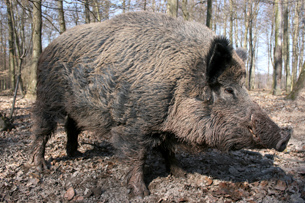Module 8
1. Module 8
1.18. Page 2
Module 8—Populations, Individuals, and Gene Pools
 Explore
Explore
The term double-edged sword is used to describe something that has two opposite effects. Many human technologies are double-edged swords in that they have positive and negative effects. As you read the section below and the assigned readings, consider how you, as a member of society, can evaluate the usefulness of these technologies. Consider the advantages and disadvantages of each from ethical, legal, economic, societal, and scientific or technological perspectives. Try to decide if the benefits of the intended consequences are worth the risks of the unintended consequences.
-
Antibiotic resistance: Not many people think of bacteria as natural populations, but bacteria certainly qualify. Bacteria are among the oldest and most successful populations on the planet. Antibiotics, which kill bacteria, were the wonder drugs of the last century—cutting mortality in humans and livestock dramatically. Although antibiotics have only been used in the past 100 years, many humans are hosts to superbug bacterial populations that are resistant to antibiotics. How did this happen? The theory of natural selection tells us that bacterial populations are composed of variants that are sensitive to antibiotics and variants that are resistant. With each successive generation of antibiotic use, those bacteria that were sensitive to the antibiotic were destroyed, leaving those variants that were resistant.
antibiotic resistance: the ineffectiveness of an antibiotic that results if a bacterial cell has alleles that make it resistant to being destroyed by antibiotics
Each dose of antibiotics will allow these bacteria to survive and pass on their resistant traits to the next generation—more of each generation are resistant until the resistant allele is the most common; at this point, the antibiotic is no longer effective.
Knowing how natural selection works, could we have predicted this unintended consequence of antibiotic use? What does widespread antibiotic resistance mean for our ability to control disease in the future? Remember to evaluate the usefulness of antibiotics and the advantages and disadvantages from ethical, legal, economic, societal, and scientific or technological perspectives.

© dinostock/6320879/Fotolia
-
Biotechnology: Square, frost-proof tomatoes? Bacteria that make human insulin? Goats that secrete cancer-fighting human interferon in their milk? As you discovered in Unit C, biotechnology, which is the manipulation of genes to benefit humanity, can be as simple and low-tech as artificial selective-breeding programs that produce bigger crop yields and livestock. Or biotechnology can be as complex as the use of recombinant DNA techniques to insert desirable genes from one species into another, producing transgenic organisms. The intended use of these technologies was to make organisms with combinations of traits that would make them more profitable for the producer and more desirable to you, the consumer. The unintended consequences are complicated.
biotechnology: manipulation of genes or traits
transgenic organism: an organism that has genes from more than one species
As you evaluate these technologies, consider what happens when genes introduced into one species jump to another species. Do corporations have the right to patent and own genes or, for that matter, recombinant organisms? Is the benefit of increased profit and the promise of more convenient food to feed a hungry planet worth the risk of altering the course of evolution?
-
monoculture: the cultivation of a single cropShrinking gene pools: Cloning techniques allow scientists to make exact genetic copies of organisms. The agriculture industry clones plants and livestock to produce genetically uniform products with qualities consumers want. Pharmaceutical industries clone organisms that can cheaply produce expensive drugs. Monoculture is a related practice of growing vast expanses of a single crop with the exclusion of varieties that aren’t commercially profitable. You can probably predict what happens when genetic variation is removed from a population—the entire population can be wiped out by the same bacterium, pest, parasite, or environmental challenge. Unless conditions are kept optimal, the whole population is at risk. Fragile, cloned, and monocultured crops and livestock are protected with heavy use of antibiotics, pesticides, and fungicides, which have harmful health effects when they find their way into our bodies—the price we pay for a perfect and abundant food supply.
-
invasive species: species that are introduced to an area and that out-compete the indigenous species in its trophic level for nutrients and/or prey; are less affected by limiting density-dependent andIntroduction of foreign invasive species: When it comes to colonization of new territories, human history is riddled with stories of good intentions gone wrong. As a local example, wild boars have recently been proclaimed as pests in central Alberta. Boars are large, furry, wild pigs that were brought from Europe to satisfy a growing Canadian market for boar meat. The animals are being raised on farms as domestic livestock. However, traditional fencing is no match for boars, and they have escaped in large numbers, eating crops and sometimes menacing livestock or people. They have few predators because of their size (and tusks!) and have acclimated nicely to Alberta's climate, breeding in the wild at an impressive rate. Do an Internet search using the keywords “Alberta wild boars” to learn more about wild boars. Or you may wish to research other examples, such as the introduction of rabbits into Australia or purple loosestrife into Alberta.
density-independent factors

© Panton/13683114/Fotolia
 Read
Read
To further understand the impact of human activity and explore classic examples of intended and unintended consequences of human activity on gene pools, read “Human Activities and Genetic Diversity” on pages 695 to 696 of the textbook.
 Watch and Listen
Watch and Listen
To review these concepts, try the “Evolution: Mutation and Selection” gizmo. Your teacher may need to provide you with a password.
 Self-Check
Self-Check
SC 1. Complete questions 1, 2, and 3 from “Thought Lab 19.2: Maintaining Genetic Diversity in the Whooping Crane” on page 696 of the textbook.
 Self-Check Answers
Self-Check Answers
SC 1.
- Reduced genetic diversity is one hypothesis. The near extinction of the whopping crane was due to loss of habitat, excessive hunting, avian disease, and lead poisoning. All of these factors would likely favour one allele over the other, thus reducing variation in the gene pool. This could also be an an example of the bottleneck or founder effect in which the population could go through a population-crashing event, such as a natural catastrophe or emigration. The small, isolated population that continues would show inbreeding and, therefore, genetic drift, which reduces diversity in the population.
- The fact that pairs bond for life is a problem for whooping crane captive breeding programs. If only one of the cranes that make up a pair is captured, the other will not mate, so its alleles are essentially removed from the gene pool. If one mate dies while in captivity or becomes incapable of breeding, then the other member of the pair will not breed. In this case, the alleles of both cranes are removed from the gene pool.
- If it is found that the whooping crane population is very similar genetically, this is detrimental to survival for the species. With more genetic variation in a population, there is a greater chance that at least some birds will have characteristics that allow them to survive environmental change.
 Try This
Try This
Livestock Genetics
TR 1. Is it desirable to farmers that livestock populations remain in Hardy-Weinberg equilibrium? Explain.
TR 2. Are small, genetically similar populations of livestock likely to experience the negative effects of inbreeding and genetic drift? Why or why not?
 Self-Check
Self-Check
SC 2. Read pages 695 to 696, “Human Activities and Genetic Diversity,” in order to complete this question.
List four human activities that have had consequences for gene pools of natural populations. State how each has affected genetic diversity in a target population. State whether the effect was intended or unintended.
| Human Activity | Effect on Genetic Diversity | Intended or Unintended Effect |
 Self-Check Answers
Self-Check Answers
SC 2. The following are possible answers. There may be others.
| Human Activity | Effect on Genetic Diversity | Intended or Unintended Effect |
fencing of land bordering highways |
decreased due to reduced gene flow/habitat fragmentation |
unintended |
conversion of forest to agriculture |
decreased due to strong selection pressure in destroyed habitat |
unintended |
over-hunting |
decreased due to selection of specific phenotypes and reduced population |
unintended |
creation of wildlife corridors across highways |
increased due to restored gene flow |
intended |
wildlife corridor: a route used by wildlife to move from one territory to another
Wildlife corridors are often part of a migratory pattern.
To review Lessons 1 to 4, you may want to review pages 678 to 699 of the textbook. In this section it is important to be able to understand and to apply the Hardy-Weinberg principle and to complete calculations based on data. Review and practice are essential to success. The questions on page 700 to 701 of the textbook provide an excellent review of Lessons 1 to 4. Your teacher can advise you as to which questions will suit your needs. Your teacher will also provide solutions to these questions.
 Module 8: Lesson 4 Assignment
Module 8: Lesson 4 Assignment
Through your reading in the textbook and through the questions proposed in this lesson, you should now have a good understanding of how the actions of humans have implications for other populations.
Retrieve your copy of Module 8: Lesson 4 Assignment that you saved to your computer earlier in this lesson. Complete the assignment. Save a copy of your completed assignment in your course folder. Submit your completed Module 8: Lesson 4 Assignment to your teacher for assessment.